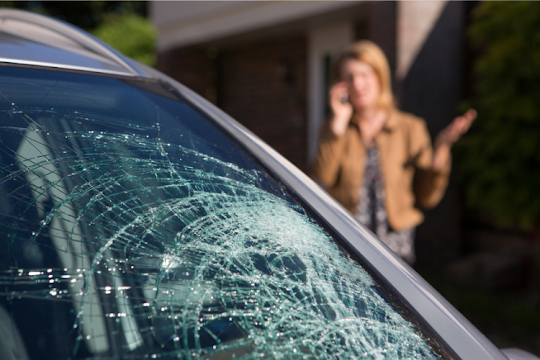
As we cruise down the highways, our cars’ windows provide us with a view of the world outside, protecting us from the elements while allowing us to feel connected to our surroundings. But it wasn’t always this way. In the early days of the automotive industry, cars were equipped with fragile and dangerous glass panes that offered little protection in the event of a collision. Fast forward to the present day, and we find ourselves driving with sophisticated auto glass technologies, safeguarding us against potential hazards and enhancing our overall driving experience.
In this blog, we will take a journey through time, exploring the remarkable evolution of auto glass – from its humble beginnings as fragile panes to the modern marvels of advanced laminates. Get ready to learn how auto glass has transformed to become an essential safety feature in today’s automobiles.
The Early Days: Fragile Panes and Limited Protection
In the early 20th century, automotive pioneers were experimenting with various materials for car windows. Unfortunately, the options were limited, and the glass used was prone to shattering into sharp fragments during accidents. This presented a severe safety hazard for drivers and passengers alike. The need for stronger, more durable glass became apparent as the automotive industry rapidly expanded.
Tempered Glass: A Safer Breakthrough
The quest for safer auto glass led to the introduction of tempered glass in the mid-1930s. Tempered glass undergoes a heating and rapid cooling process, making it several times stronger than regular glass. When shattered, tempered glass breaks into small, pebble-like pieces, reducing the risk of severe injuries during accidents. This breakthrough significantly enhanced automotive safety standards and became a staple on car windows.
Laminated Glass: A Milestone in Safety and Security
In the 1940s, another crucial advancement emerged – laminated glass. This revolutionary material is composed of two layers of glass sandwiched together with a layer of polyvinyl butyral (PVB) interlayer. In the event of an impact, the PVB layer holds the glass together, preventing it from shattering and keeping occupants inside the vehicle. Laminated glass became widely used in windshields and later in side windows, significantly improving the structural integrity of vehicles.
Power Windows: A Touch of Convenience and Luxury
While the evolution of auto glass was shaping up, another convenience was on the horizon – power windows. Prior to the 1950s, cars featured manual window cranks that required physical effort to roll the windows up or down. However, power window systems, powered by electric motors, began to gain popularity as a luxury feature. Power windows provided ease of use and became a sought-after option in many car models.
Smart Glass Technology: From Strength to Intelligence
As automotive technology advanced, so did auto glass. Smart glass technology, utilizing electrochromic properties, has made its appearance in some luxury vehicles. Smart glass can change its opacity with the flick of a switch, offering privacy and reducing glare. Additionally, advancements in adhesive technologies further improved the bonding of auto glass to the vehicle’s structure, enhancing overall safety.
Eco-Friendly Solutions: Towards Sustainability
In recent years, the automotive industry has become increasingly focused on eco-friendly solutions. Recyclable and biodegradable glass materials are being explored to reduce their environmental impact. Furthermore, solar control glass is being integrated into windshields to improve energy efficiency and reduce the carbon footprint of vehicles.
Navigating the Future – ADAS Integration and Autonomous Vehicles
The future of auto glass is intrinsically tied to the rise of Advanced Driver Assistance Systems (ADAS) and autonomous vehicles. ADAS technologies, such as lane departure warning and collision avoidance, often rely on cameras and sensors mounted on the windshield. Therefore, proper calibration and maintenance of auto glass are critical to ensuring the seamless functioning of these safety features. Moreover, as we inch closer to fully autonomous vehicles, the role of auto glass will evolve beyond providing a view of the road, potentially transforming into interactive screens and augmented reality displays.
Ensuring Safety and Longevity: Power Window and Auto Glass Repairs
Despite the advancements, accidents, and wear are inevitable. Power windows and auto glass can sustain damage from various factors, including road debris, extreme weather conditions, and accidents. Immediate attention to windshield chip repair and auto glass repair near you is crucial to prevent minor issues from escalating into major problems.
From the delicate and hazardous glass panes of the past to the advanced laminates and smart glass of today, the evolution of auto glass has been a remarkable journey. The transformation from fragile panes to durable and protective laminated glass has significantly contributed to the safety of drivers and passengers alike. As we continue to embrace technological innovations, the future of auto glass holds even more promise, with sustainability and safety at the forefront of design. Remember, whether you need power window repair in El Paso or car windshield replacement services in Alamogordo, timely action ensures both your safety and the longevity of your vehicle’s auto glass. By embracing the legacy of auto glass and understanding its role in our driving experience, we can ensure safer and more enjoyable journeys on the road ahead.
